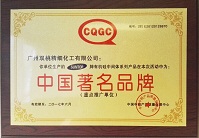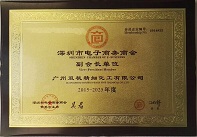
![]() E-mail: admin@gz-chemical.com
E-mail: admin@gz-chemical.com
Email us,best price and silane solutions for you!
Tel:+86 (20) 29035969

![]() E-mail: admin@gz-chemical.com
E-mail: admin@gz-chemical.com
Email us,best price and silane solutions for you!
Tel:+86 (20) 29035969


Instead of searching for a needle in a haystack, what if you were able to sweep the entire
haystack to one side, leaving only the needle behind? That's the strategy researchers in the
University of Georgia College of Engineering followed in developing a new microfluidic device
that separates elusive circulating tumor cells (CTCs) from a sample of whole blood.
CTCs break away from cancerous tumors and flow through the bloodstream, potentially
leading to new metastatic tumors. The isolation of CTCs from the blood provides a minimally
invasive alternative for basic understanding, diagnosis and prognosis of metastatic cancer.
But most studies are limited by technical challenges in capturing intact and viable CTCs with
minimal contamination.
"A typical sample of 7 to 10 milliliters of blood may contain only a few CTCs," said Leidong
Mao, a professor in UGA's School of Electrical and Computer Engineering and the project's
principal investigator. "They're hiding in whole blood with millions of white blood cells. It's a
challenge to get our hands on enough CTCs so scientists can study them and understand
them."
Circulating tumor cells are also difficult to isolate because within a sample of a few hundred
CTCs, the individual cells may present many characteristics. Some resemble skin cells while
others resemble muscle cells. They can also vary greatly in size.
"People often compare finding CTCs to finding a needle in a haystack," said Mao. "But
sometimes the needle isn't even a needle."
To more quickly and efficiently isolate these rare cells for analysis, Mao and his team have
created a new microfluidic chip that captures nearly every CTC in a sample of blood—more
than 99% - a considerably higher percentage than most existing technologies.
The team calls its novel approach to CTC detection "integrated ferrohydrodynamic cell
separation," or iFCS. They outline their findings in a study published in the Royal Society of
Chemistry's Lab on a Chip.
The new device could be "transformative" in the treatment of breast cancer, according to
Melissa Davis, an assistant professor of cell and developmental biology at Weill Cornell
Medicine and a collaborator on the project.
Guangzhou Double Peach Fine Chemical Co.,Ltd
Address: No 3401 Huangpu East Road, Huangpu District, Guangzhou, China
Tel:+86 (20) 29035969 Fax:+86(20)29035979
Tel/Wechat/Whatsapp:0086 13826126978 admin@gz-chemical.com